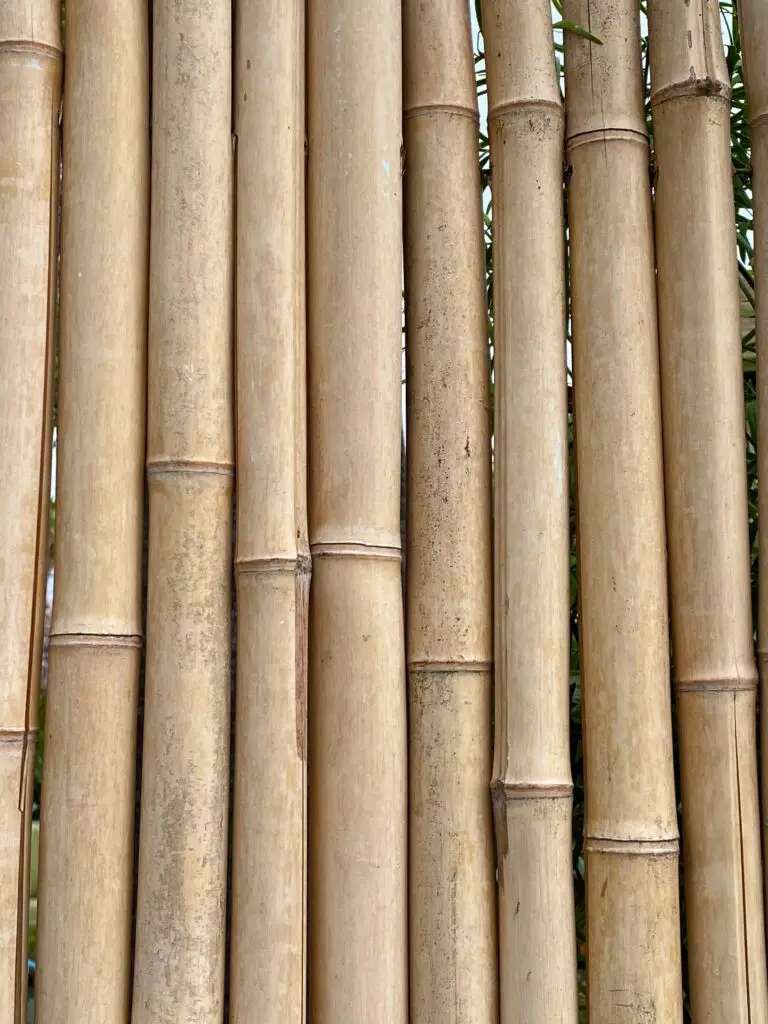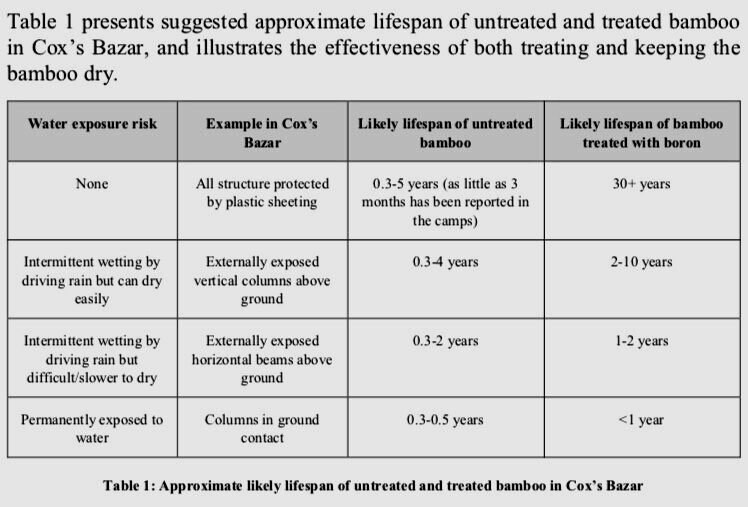
How Long Can You Guaranteed Bamboo to Last?
Bamboo is overcoming its generational stigma in Central/South America and Asia as a low-cost or free timber alternative generally associated with the lower classes.
Better bamboo buildings for schools, resorts, and residences in the tropical and semi-tropical zones where it thrives have begun to elevate bamboo and move it away from its reputation as a temporary and last-resort material to utilize.
Many will promote bamboo for its qualities and benefits, but few will discuss its fragility – how bamboo, like any other building material, can fail. Many bamboo experts are frequently questioned, “How long does bamboo genuinely last?”

- My response to such a broad question is that bamboo can survive anywhere from less than 6 months to more than 30 years, depending on a set of parameters that I shall outline below.
- If we take a raw bamboo pole from the clump and plant it in the ground to build a fence post, for example, it can endure up to 6 -9 months before rotting and collapsing.
- If we utilized an unprocessed or chemically treated bamboo pole and built with it, the pole may be attacked by insects, fungi, and decay and may endure less than two years.
- If we treat the bamboo pole with insect and rot repellent chemicals, coat it with a protective finish, and design it to be protected from rain and sun, it can last for more than 20 – 30 years.
- When combined with frequent inspection, maintenance, and replacement (it is far easier to replace a bamboo pole with a new one than it is to replace or repair steel, timber, or concrete), it can probably last for more than 30 years.
(It should be noted that the aforementioned parameters apply to a hot and humid tropical environment, i.e. between latitudes 30 degrees north and 30 degrees south.)
The table below, taken from Sebastian Kaminski’s outstanding study on bamboo durability (which is definitely worth reading), shows the point:

The following are some more aspects that influence bamboo’s durability. Bamboo may be beautiful and last for many generations. It can and will become a material that will challenge many of today’s standard building materials if given the attention and respect it requires.
- Choose a bamboo species that is well-known for its usage in construction. Consult with locals and builders in the area.
- Ascertain that the bamboo was collected and treated properly. Improper harvesting can cause cracking, slumping, and strength loss. Harvesting at the wrong time results in more starch in the bamboo, which attracts beetles, termites, and fungal (rot) attack.
- The collected bamboo must be chemically treated. A boron-boric acid mixture is a dependable approach. Other traditional methods are ineffective and may not adequately safeguard the bamboo.
- The surrounding climate has a significant impact on the durability of bamboo. Bamboo should not be exposed to wet and damp environments for an extended period of time as this can result in humidity and mould. Long dry seasons can also cause bamboo to fracture or migrate if it is exposed to too much sun.
- As a result, bamboo building placement must be considered: locate buildings where there is airflow rather than in wind shadow zones. Orient and locate buildings to provide a balance of sunlight and shade.
- Employ qualified designers and builders. Examine previous samples of their work with exposed bamboo structural members and facades.
- What about coatings and how they can ‘protect’ or ‘extend’ the life of bamboo? It is critical to design and build for long-term durability rather than relying on’make-up’ to protect your bamboo. A light coating of bamboo improves its appearance while also protecting it from knocks and abrasion.
Even after a couple of earthquakes and many alternating wet and dry seasons, the bamboo buildings I am familiar with in Bali are more than 12 years old and exhibit no significant wear and tear or structural damage. I believe this is because they were built to last and have been adequately cared for and maintained on a regular basis.
Bamboo structures dating back more than a century can be found in Japan and abroad. I was unable to locate these examples. Please share and point them out if you have a solid record of these.
Bamboo may and will decay quickly if it is not harvested and treated properly. Bamboo may survive for a long period, possibly a lifetime, with the correct design and building strategy, as well as maintenance and post-construction care.
To see other material construction, please see here.
To know other construction guides, tips, and methodology for beginners, veterans, and contractors, please see here.
